Dacia Spring vs Fiat 600 – Differences & prices compared
Compare performance, boot space, consumption and price in one view.
Find out now: which car is the better choice for you – Dacia Spring or Fiat 600?
The Dacia Spring (SUV) comes with a Electric engine and Automatic transmission. In comparison, the Fiat 600 (SUV) features a Electric or Petrol MHEV engine with Automatic transmission.
When it comes to boot capacity, the Dacia Spring offers 308 L, while the Fiat 600 provides 385 L – depending on how much space you need. If you’re looking for more power, decide whether the 65 HP of the Dacia Spring or the 156 HP of the Fiat 600 suits your needs better.
In terms of consumption, the values are 13.20 kWh per 100 km for the Dacia Spring, and 15.10 kWh4.80 L for the Fiat 600.
Price-wise, the Dacia Spring starts at 14500 £, while the Fiat 600 is available from 21800 £. Compare all the details and find out which model fits your lifestyle best!
Dacia Spring
The Dacia Spring stands out as an affordable and environmentally friendly option in the electric vehicle market, combining practicality with a compact design ideal for urban settings. Its minimalist interior, while basic, provides all the essential features needed for a comfortable drive, reflecting its cost-effective approach. The vehicle's performance suits city driving, making it an appealing choice for those seeking an entry-level electric car.
details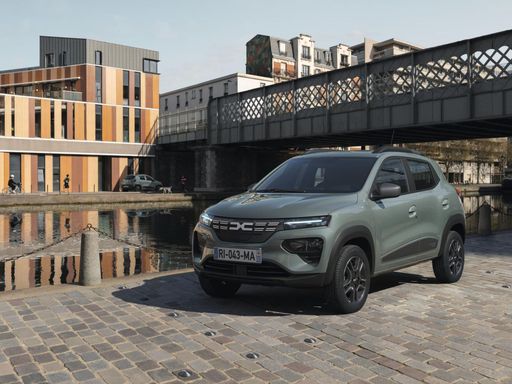 @ dacia-presse.de
@ dacia-presse.de
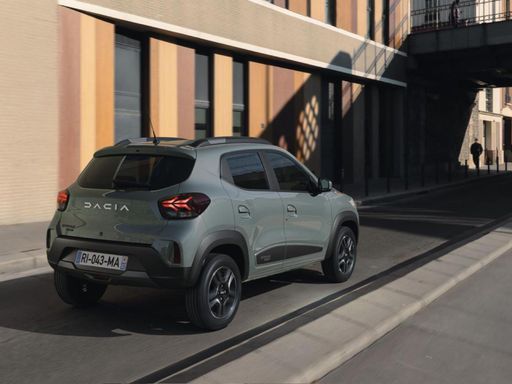 @ dacia-presse.de
@ dacia-presse.de
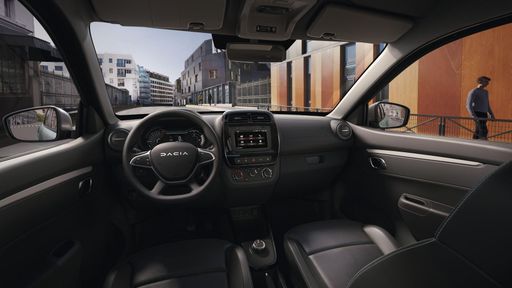 @ dacia-presse.de
@ dacia-presse.de
Fiat 600
The Fiat 600 is a compact city car that embodies the essence of Italian design and practicality. Renowned for its nimble handling and efficient use of space, it offers an enjoyable driving experience for urban commuters. With its classic charm and modern updates, the Fiat 600 remains a beloved choice for those seeking style and functionality in a small package.
details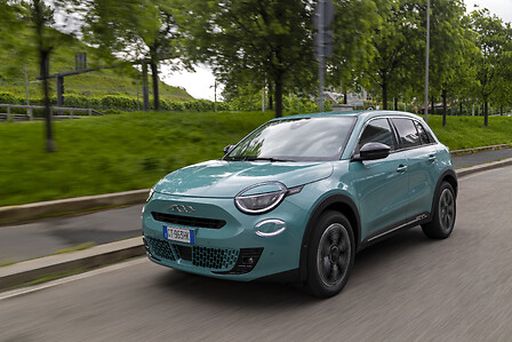
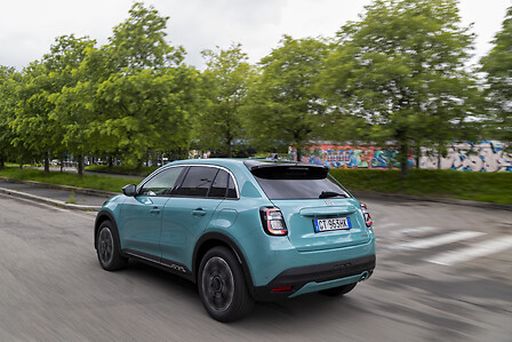

|

|
|
|
|
Costs and Consumption |
|
|---|---|
|
Price
14500 - 17100 £
|
Price
21800 - 36800 £
|
|
Consumption L/100km
-
|
Consumption L/100km
4.80 L
|
|
Consumption kWh/100km
13.2 - 14.1 kWh
|
Consumption kWh/100km
15.10 kWh
|
|
Electric Range
225 - 228 km
|
Electric Range
409 km
|
|
Battery Capacity
26.80 kWh
|
Battery Capacity
51 kWh
|
|
co2
0 g/km
|
co2
0 - 109 g/km
|
|
Fuel tank capacity
-
|
Fuel tank capacity
44 L
|
Dimensions and Body |
|
|---|---|
|
Body Type
SUV
|
Body Type
SUV
|
|
Seats
4
|
Seats
5
|
|
Doors
5
|
Doors
5
|
|
Curb weight
1013 - 1050 kg
|
Curb weight
1355 - 1595 kg
|
|
Trunk capacity
308 L
|
Trunk capacity
360 - 385 L
|
|
Length
3701 mm
|
Length
4178 mm
|
|
Width
1583 mm
|
Width
1779 mm
|
|
Height
1519 mm
|
Height
1523 - 1525 mm
|
|
Payload
265 - 302 kg
|
Payload
405 - 430 kg
|
Engine and Performance |
|
|---|---|
|
Engine Type
Electric
|
Engine Type
Electric, Petrol MHEV
|
|
Transmission
Automatic
|
Transmission
Automatic
|
|
Transmission Detail
-
|
Transmission Detail
Dual-Clutch Automatic, Reduction Gearbox
|
|
Drive Type
Front-Wheel Drive
|
Drive Type
Front-Wheel Drive
|
|
Power HP
44 - 65 HP
|
Power HP
110 - 156 HP
|
|
Acceleration 0-100km/h
13.7 - 19.1 s
|
Acceleration 0-100km/h
8.5 - 10.5 s
|
|
Max Speed
125 km/h
|
Max Speed
150 - 200 km/h
|
|
Torque
113 - 125 Nm
|
Torque
205 - 260 Nm
|
|
Number of Cylinders
-
|
Number of Cylinders
3
|
|
Power kW
33 - 48 kW
|
Power kW
81 - 115 kW
|
|
Engine capacity
-
|
Engine capacity
1199 cm3
|
General |
|
|---|---|
|
Model Year
2024
|
Model Year
2023 - 2025
|
|
CO2 Efficiency Class
A
|
CO2 Efficiency Class
A, C
|
|
Brand
Dacia
|
Brand
Fiat
|
Dacia Spring
The Revolution of Affordable Electric Mobility: The Dacia Spring
The automotive world has witnessed remarkable advancements in electric vehicles (EVs), with the Dacia Spring emerging as a noteworthy contender in the affordable segment. Combining efficiency, affordability, and practicality, the Spring offers an intriguing prospect for eco-conscious individuals and city dwellers alike.
Powertrain and Performance: A Look Under the Hood
The Dacia Spring is equipped with an electric motor that delivers between 44 to 65 PS, translating into a versatile driving experience tailored to urban landscapes. It operates on a front-wheel-drive system, ensuring a familiar and manageable handling experience.
Dacia Spring's electric engine is paired with an automatic transmission, utilising a reduction gearbox. This setup allows for smooth acceleration and a top speed of 125 km/h, ensuring that everyday driving scenarios are handled with ease.
Efficiency and Range: Eco-Friendly without Compromise
Efficiency is a cornerstone of the Dacia Spring's design, boasting an energy consumption of just 13.2 to 14.1 kWh per 100 km. When fully charged, its 26.8 kWh battery offers a respectable range of 225 to 228 km, making it ideal for daily commutes and short trips.
Furthermore, the Spring takes pride in its commendable CO2-efficiency class A, emphasising its commitment to reducing environmental footprint with a zero-emission profile.
Design and Practicality: Compact yet Comprehensive
Lying in the SUV category, the Dacia Spring is compact with dimensions of 3701 mm in length and 1583 mm in width, making it a perfect match for urban environments where space is at a premium. Despite its modest size, it provides a generous boot space of 308 litres, ensuring practicality isn’t sacrificed.
Comfort and Interior: For the Everyday Journey
The Dacia Spring comfortably seats up to four passengers. The cabin offers a minimalist yet functional design, available in multiple trim lines including Essential, Expression, and Extreme, allowing customers to choose according to their taste and requirement.
With its ergonomic layout and simplicity, the interior is crafted to enhance the driving experience by focusing on essential needs, avoiding unnecessary distractions.
Affordability and Accessibility: Breaking Barrier
The Dacia Spring stands out in the electric vehicle market due to its affordability, with prices ranging from 16,900 to 19,900 €. This ensures that environmentally friendly transportation is accessible to a broader audience.
Additionally, the Spring allows for cost-effective maintenance and operational expenses, offering monthly running costs between 570 to 599 € and cost per km between 22.8 to 24 cents, making it an economical choice in the long run.
Final Thoughts: The Future of Urban Mobility
In summary, the Dacia Spring serves as a testament to how electric vehicles can be both affordable and practical, without compromising on essential features. Whether it is for the eco-conscious urbanite or those looking for a cost-effective daily driver, the Spring is positioned as a viable solution for navigating the future of urban mobility.
Fiat 600
The Return of an Icon: The Fiat 600
The legendary Fiat 600, with its rich history and iconic status, makes a triumphant return, blending classic design aesthetics with contemporary innovations. As part of Fiat's latest offering, the new Fiat 600 continues to capture the spirit of its predecessors while incorporating technological advancements to meet the demands of modern drivers.
A Technological Marvel Under the Hood
At the heart of the new Fiat 600 lies a choice between two innovative powertrains: a petrol mild-hybrid and a fully electric version. The mild-hybrid version houses a 1.2-litre, 3-cylinder engine, producing between 100 to 136 PS, depending on the variant. This engine is designed not only to deliver powerful performance but also to ensure fuel efficiency, boasting a consumption rate of just 4.8 litres per 100 km. The mild-hybrid technology supports the engine for better efficiency during city driving, making it ideal for urban environments.
The Electric Evolution
For those inclined towards sustainable mobility, the Fiat 600e offers a completely electric driving experience. With a robust output of 156 PS, the electric variant promises a smooth and silent drive. It features a 51 kWh battery, providing an impressive range of 409 km. This positions the Fiat 600e as a competitive option for eco-conscious drivers looking for zero-emission commuting without compromising on range.
Design and Practicality in Harmony
Measuring 4178 mm in length and offering a luggage capacity between 360 to 385 litres, the Fiat 600 is designed as a compact SUV, perfect for city street navigation. Despite its compact size, it doesn't compromise on comfort, offering seating for up to five passengers. The integration of modern materials and intuitive controls within the cabin underscores Fiat's commitment to driver and passenger comfort.
Driving Dynamics and Safety
The Fiat 600 comes equipped with an automatic transmission system, ensuring smooth gear shifts whether you choose the mild-hybrid dual-clutch system or the electric version's reduction gearbox. With a top speed ranging from 150 to 200 km/h and a 0-100 km/h acceleration time between 8.5 to 10.5 seconds, it offers a spirited drive. Safety is also a key focus, with advanced driver-assistance systems to enhance road safety and driving confidence.
Efficiency and Affordability
The new Fiat 600 also shines brightly in terms of cost efficiency, with monthly costs ranging from 987 to 1088 euros and operating costs calculated at 39.5 to 43.5 cents per kilometre. This affordability, coupled with its CO2 efficiency class ranging from C to A, makes the Fiat 600 a smart choice for both environmentally and budget-conscious drivers.
Model Ranges and Pricing
Offered in multiple trims including the '125-Jahre-Edition DCT', 'La Prima DCT', and 'RED', the Fiat 600 provides varied options for different preferences. Pricing for this range starts at 24,990 euros and goes up to 42,490 euros, depending on the choice of powertrain and trim level.
Conclusion
The Fiat 600's return to the automotive scene is a testament to Fiat's innovative spirit, marrying classic charm with modern advancements. Whether opting for the efficiency of a mild-hybrid or the eco-friendliness of an electric drive, the Fiat 600 offers a compelling blend of style, performance, and economy.
Which drive types are available for the Dacia Spring?
Available as Front-Wheel Drive.
The prices and data displayed are estimates based on German list prices and may vary by country. This information is not legally binding.
